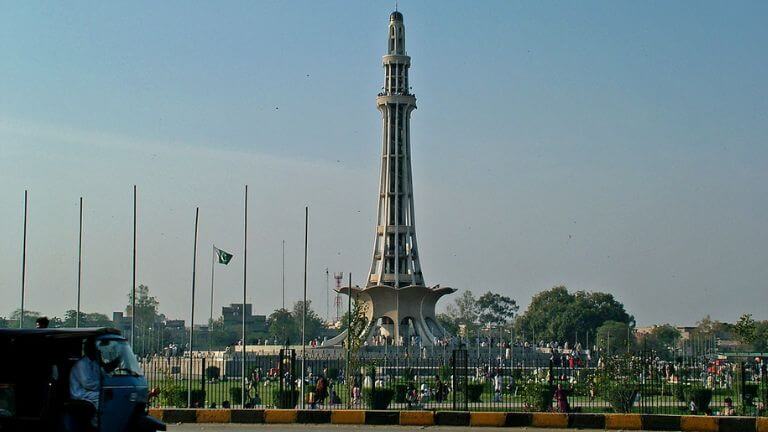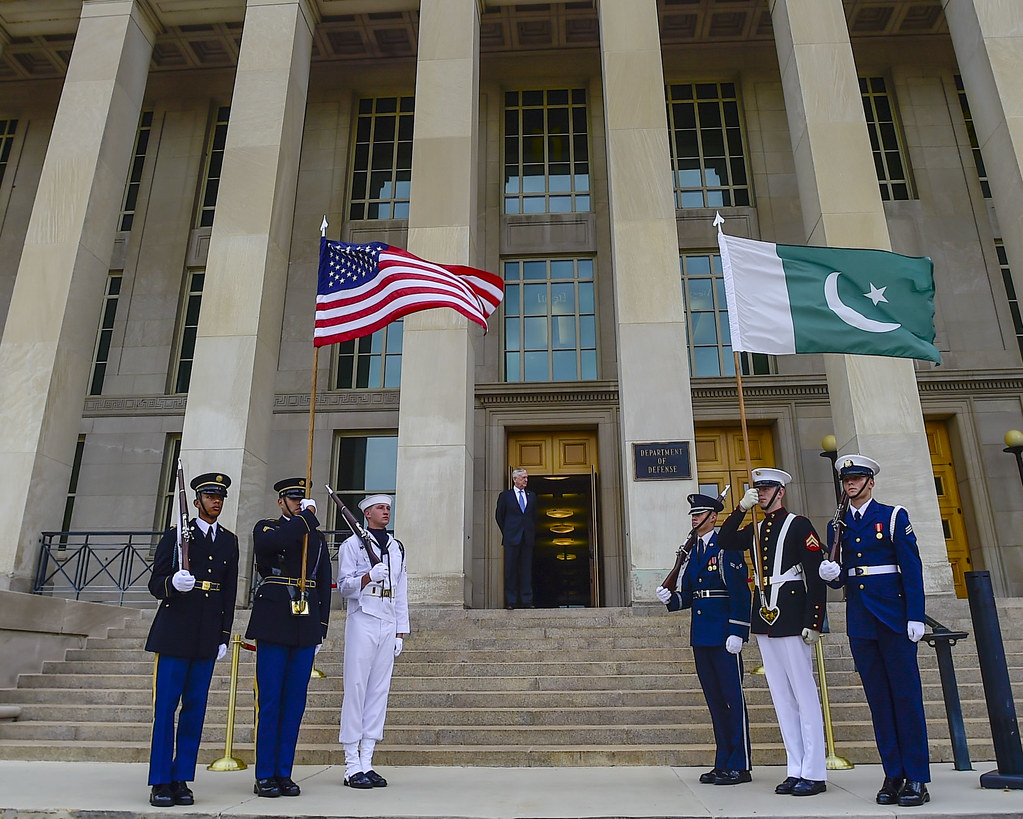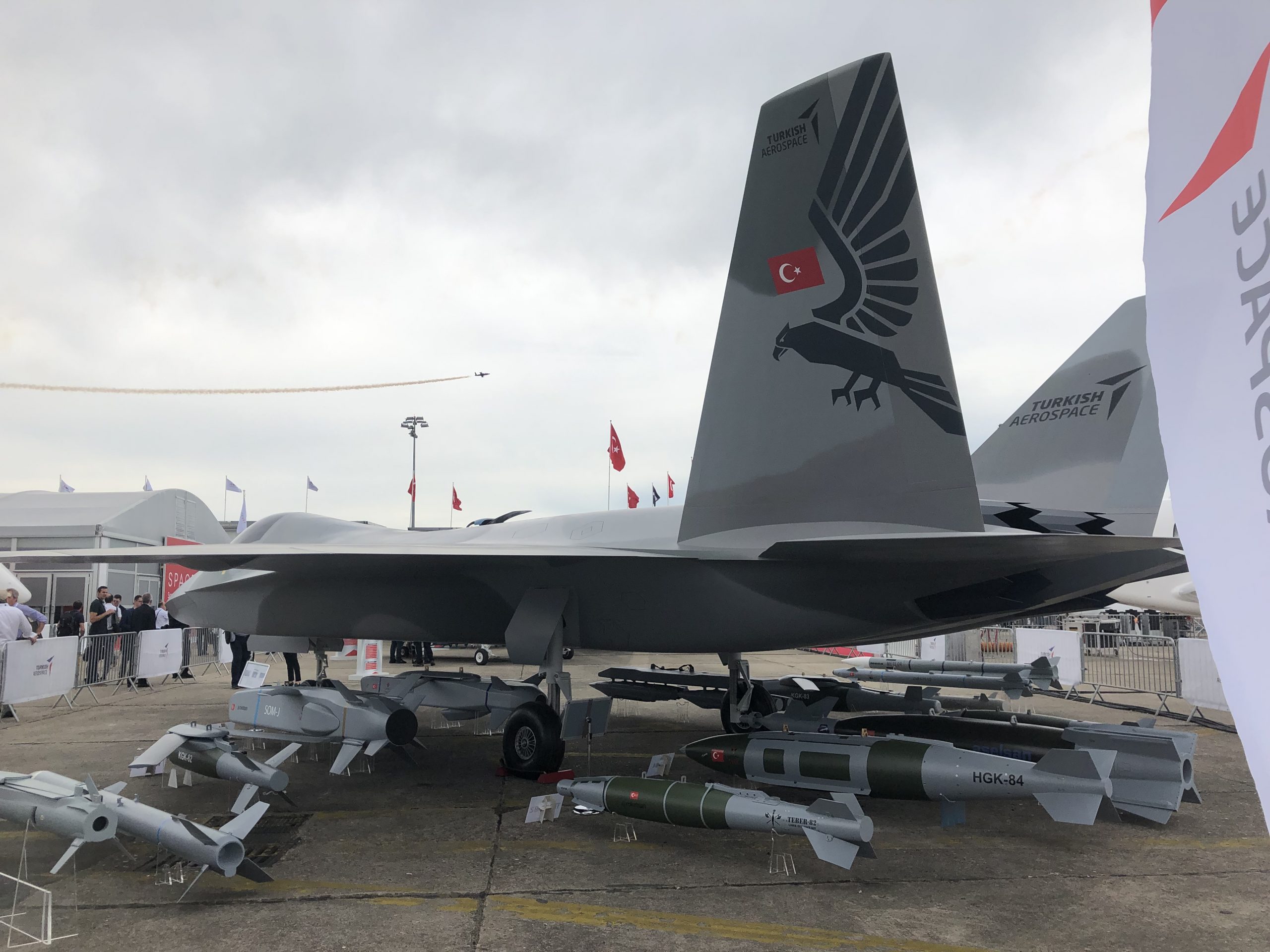Minar e Pakistan History, Design and Some Other Facts
Almost every country has a unique monument or landmark for its history and culture, such as America’s Statue of Liberty, France’s Eiffel Tower and Italy’s Leaning Tower of Pisa.
After independence, Pakistan had several landmarks and monuments that symbolise the culture and history of the country, but the country required a unique landmark that represented the battle for freedom and the sacrifices of many peoples.
After 12 years of Pakistan’s independence, the decision was made to build Minar e Pakistan. Because that time, Pakistan needed a national monument to tell the next generation about the struggle and sacrifices of subcontinent Muslims for independence.
Construction of Minar e Pakistan
Minar e Pakistan was constructed in Lahore Minto Park between 1960 and 1968. Under the presidency of Commissioner Lahore, a committee of 22 members was established. This committee was called the Pakistan Day Memorial Committee. The Committee created the Minar e Pakistan’s basic design.

On March 1960 the governor of west Pakistan Akhtar Husain started the construction of this national monument. Mian Abdul Khaliq and Company built the structure of the Minar. During the construction, the project faced many financial problems.
The funds for this project were raised by imposing an additional tax on cinema houses and horse racing tickets at the request of West Pakistan Governor Akhtar Hussain.
The project took eight years to complete, and the construction of Minar e Pakistan was ultimately completed on October 31, 1968, at an estimated cost of Rs. 7,058,000. On March 23, 1969, it was open to the public.
Design and Structure of Minar e Pakistan
Minar e Pakistan was designed by Nasreddin Murat-Khan. He was a Pakistani architect of Russian origin. He also designed the Gaddafi Stadium and several other important buildings and structures.

All the materials procured for the construction of Minar e Pakistan were locally sourced and transported from Hazara, Swat, Texila and other parts of Pakistan.
Minar-e-Pakistan stands approximately 70 metres above the ground. The unfolding petals combined with the finishing of the flower-like base are 9 metres tall. The tower’s diameter is approximately 9.75 metres.
Minar e Pakistan has five galleries and 20 flours. Additionally, the tower contains 324 steps and one elevator for accessing the top. The base of Minar is made up of four platforms. To represent the humble beginnings of the struggle for freedom.
The first platform is made with uncut stones from Taxila, the second platform is built with hammer-dressed stones, the third platform is made of chiselled stones, and the fourth and final platform is made with polished white marble that represents the success of the Pakistan Movement.
Inscription
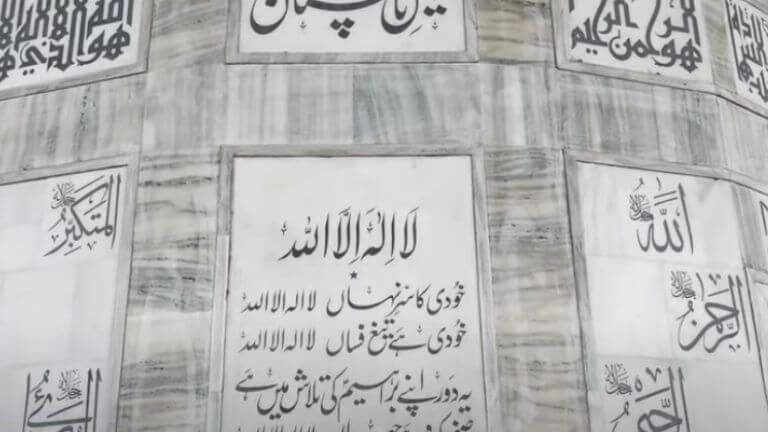
At the base of Minar, there are floral inscriptions on then converging white marble commemorative plaques. The inscription contains the wording of the Lahore Resolution in Urdu and Bengali languages. The wording of the Delhi Resolution is also inscribed. On different plaques, 99 names of Allah and Quranic verses are written in Arabic calligraphy. Other significant inscriptions of Muhammad Ali Jinnah in Urdu, Bengali, and English, as well as a few couplets of Allam a Iqbal.
Historical Importance of Minar e Pakistan
On 23 march 1940, the All India Muslim League held its annual session at Minto Park (Greater Iqbal Park) in Lahore. At this event, Quaid e Azam Mohammad Ali Jinnah presented a historical resolution called Lahore (Resolution).
The site of this historic rally and the Minar e Pakistan location is the same. So now you can understand the significance of Minar e Pakistan. Because of its historical importance, Minar e Pakistan is the most visited site in Lahore.
The importance of this monument remains high. because of Minar e Pakistan history, It’s still difficult to conduct a successful political rally in Minar e Pakistan.
If you want to know about Top 10 Sports in Pakistan
Facts About Minar e Pakistan
- Minar e Pakistan is the major tourist attraction of Lahore.
- Nasreddin Murat-Khan refused to accept money for constructing the Minar-e-Pakistan because It was a gift from him to the country that provided him with his ultimate home.
- In 1963, Nasreddin Murat-Khan received the President’s Pride of Performance Award, Tamgha-e-Imtiaz.
- On February 21, 1999, Indian Prime Minister Atal Bihari Vajpayee was the first Indian leader to visit Minar-e-Pakistan.
- Minar-e-Pakistan is also known as the “Tower of Pakistan” or “Pakistani Liberty Tower,”.
- After three persons committed suicide by jumping from the Minar-e-Pakistan in 2007, the government banned anyone from climbing the tower.
Greater Iqbal Park
In 1849 British renamed the grounds Minto Park, and after the independence of Pakistan, the park was renamed Iqbal Park in honour of Poet Dr Muhammad Iqbal.
The Lahore Development Authority took administration of the park in 1984. The park authority begins renovations, creating little parks and gardens for children, as well as expanding the park’s lake and a few other minor changes.
The park’s expansion began in 2015. The Panjab government has included every historical building near the Minar e Pakistan in the park, such as Shahi Qila, Badshahi Mosque, and Hazuri Bagh.
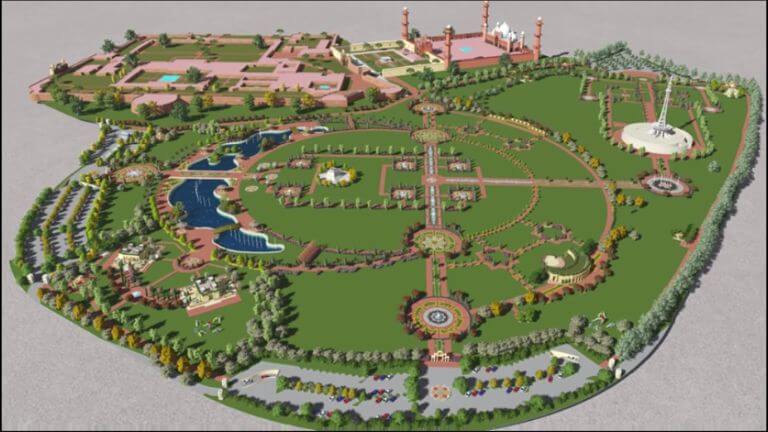
The park’s megaproject was completed in 2016 at a total cost of PKR 981 million, and it is now known as Greater Iqbal Park. After the completion of this project, Punjab Government passed over park administration to the Parks and Horticulture Authority.
The Greater Iqbal Park has been completely renovated and now includes the Minar-e-Pakistan, the Tomb of Hafeez Jalandhari, the Tomb of Allama Iqbal, a musical fountain, the National History Museum, a library, a boating lake, a Mughal-style baradari, a children’s play area, a food court, an open-air gym, walking trails, a buggy track, and gazebos.
Conclusion
Minar e Pakistan is our inheritance, so It is our responsibility as Pakistanis to protect our national monuments. Because every monument narrates the nation’s history and culture. The Minar e Pakistan is more than just a structure; it teaches us that unity is the power of every nation.

